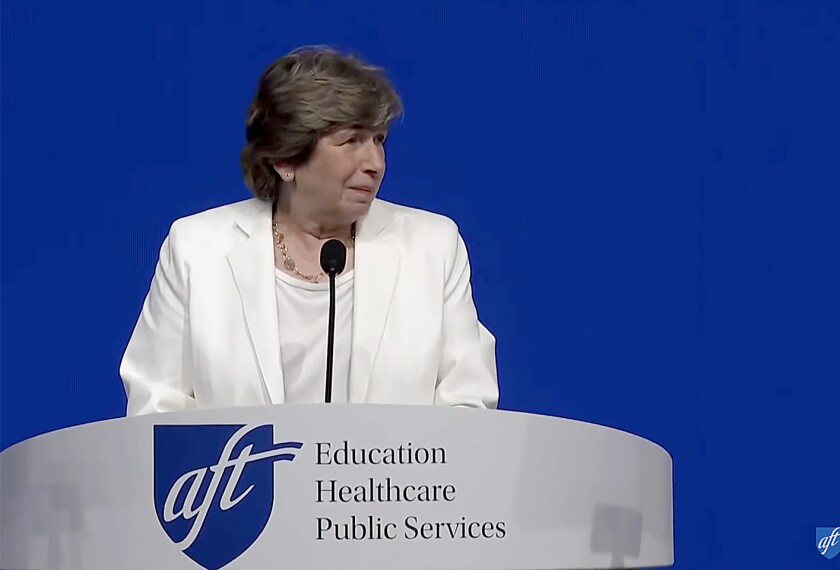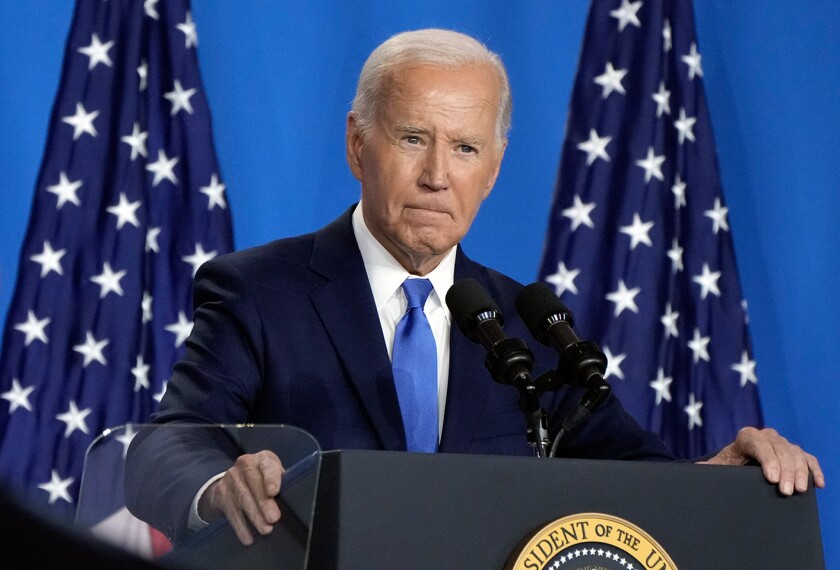Includes updates and/or revisions
Federal education officials last week pledged that the economic-stimulus program’s $650 million innovation fund will reserve the largest grants for schools, districts, and nonprofit organizations that want to finance programs with proven track records and are ready to grow.
In the U.S. Department of Education’s first substantial preview of the “Investing in Innovation” grant program—newly dubbed the “i3 Fund”—Secretary of Education Arne Duncan sketched out three broad grant categories that, in essence, will make the biggest awards where there’s the most evidence of success.
The grants start going out early next year, and the largest—of up to $50 million each—will be reserved for “proven” programs that are ready to grow, Mr. Duncan told a gathering of school district superintendents here. The second category will be grants of up to $30 million for programs that already exist in pilot form, where research shows they work. The smallest grants will be for up to $5 million in seed money for “pure innovation”—ideas that aren’t proved but show promise.
“Educational innovation should not be confused with just generating more great ideas or unique inventions,” said Mr. Duncan at a symposium hosted by ACT Inc., the Iowa City, Iowa-based nonprofit organization, and America’s Choice, a school reform group in Washington. “Instead, we need new solutions.”
A formal framework for how the grant process will work, what criteria will be used to judge proposals, and an exact timetable, including application deadlines, will be released in the coming weeks.
Still, Mr. Duncan provided the first insight into how the department will structure those grants and what it will be looking for. Education officials said there would likely be two rounds to the competition, although they would consider consolidating the rounds into one if districts and nonprofit groups need more time to apply.
Discretionary Pot
The i3 innovation grants are part of a larger $5 billion pot of discretionary money available to Mr. Duncan as part of the American Recovery and Reinvestment Act passed by Congress in February. The i3 program is set aside for school districts, nonprofit organizations, and consortia of schools to encourage innovation.
Separately, Education Department officials are asking the philanthropic community to pledge money beyond the $650 million in the stimulus package toward the department’s goal of scaling up innovation at the district level.
In addition, a larger $4.35 billion is earmarked for the Race to the Top Fund—a competitive grant program for states to pay for large-scale education improvement efforts that focus on bolstering academic standards, teacher quality, data systems, and low-performing schools. President Barack Obama officially kicked off the Race to the Top Fund competition last month in a speech at the Education Department, when the proposed criteria for judging states were released for public comment. (“States Scramble for Coveted Dollars,” July 24, 2009.)
Details of a separate $350 million competition within the Race to the Top Fund to help states implement common assessments will be announced later. (“Duncan Unveils Details on Race to the Top Aid,” June 15, 2009.)
Evidence-Based Criteria
James H. Shelton, the assistant deputy secretary who leads the department’s office of innovation and improvement, said at the Aug. 20 event that data and validation are important components of any successful innovation-grant proposal.
Mr. Shelton said that when “rock-solid evidence” isn’t available, then the rationale behind a proposal must be grounded in strong theories and research. “We have many anecdotes,” he said. “But we have to get beyond the anecdotes.”
He acknowledged the administrative challenges ahead for the department, as thousands of applications are expected. Judging the smaller “pure innovation” grants could be particularly vexing, Mr. Shelton added, as the task will likely involve comparing “apples and oranges.”
For the majority of school districts that have tight budgets, the i3 grants are particularly attractive, said Sheryl R. Abshire, the chief technology officer of the 32,400-student Calcasieu Parish district in Lake Charles, La.
“School districts don’t have the luxury of sitting around and waiting for money anymore,” said Ms. Abshire, who attended the briefing. Her school district is already starting to plot strategy on how to win one of the grants. She said the focus will be, at least in part, on improving technology in the classrooms and the professional development teachers need to use it.
In making the awards, Mr. Duncan said the Education Department will want to see programs driven by student outcomes that can be successfully scaled up and are sustainable once federal grant money runs out.
The secretary specifically cited his interest in increasing graduation rates and college preparedness, expanding the school day and academic year, and improving the quality and reach of prekindergarten programs.
Models Cited
In his speech, Mr. Duncan singled out several models as examples of innovation, including the Teaching Fellows programs that have been established in a number of cities. He also cited Mastery Charter Schools, in Philadelphia, the Los Angles-based Green Dot Public Schools, and the Academy for Urban School Leadership—a Chicago-based not-for-profit—as examples in the area of turning around failing schools.
And Mr. Duncan devoted a sizable portion of his speech to praising Wendy Kopp, who started Teach For America while a Princeton University undergraduate. TFA recruits recent liberal arts graduates into the teaching profession.
The department also is working to establish an interactive i3 Web platform that will allow for online discussion and reviews—by anyone—of promising innovative practices that can help districts and others prepare proposals. For example, it could be a way for a school district to find a partner for an innovative program it wants to try, or a way to solicit ideas to improve a program.
That is one way, said Mr. Shelton, the assistant deputy secretary, that the department itself is trying to be innovative.





